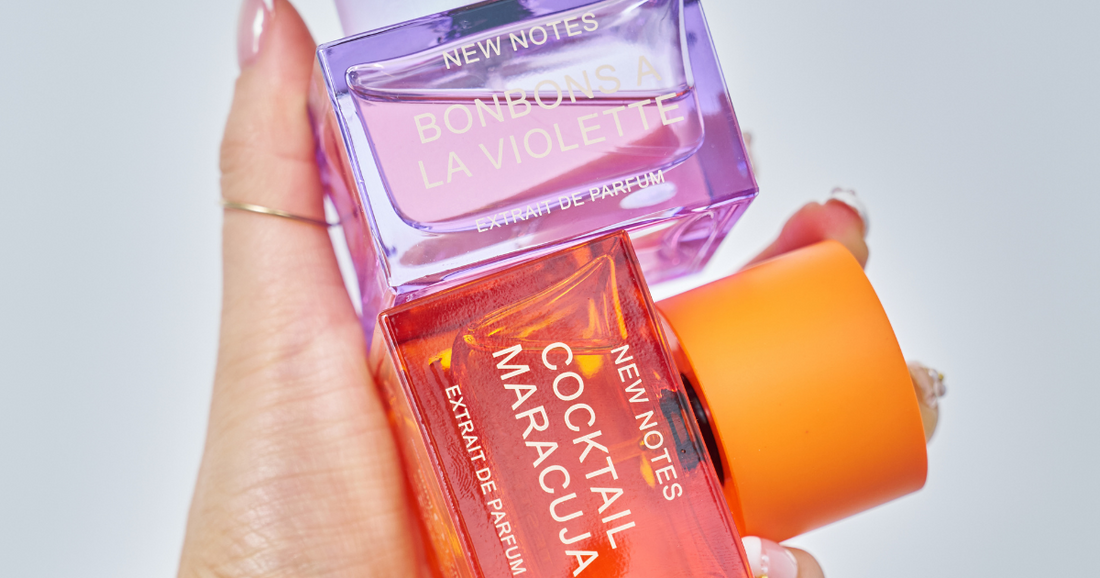
Understanding Top, Heart, and Base Notes in Perfume
Every perfume has a story, and it unfolds in layers. From the first refreshing spritz to the warm, lingering finish, fragrance notes reveal themselves in stages: top, heart, and base. And knowing how these notes work will change how you experience scent.
What Are Top Notes in Perfume?
Think of top notes as the opening act. They create that immediate first impression when you spray a fragrance. These scents are often crisp, bright, and meant to draw you in quickly. But because they’re made from smaller, more volatile molecules, they fade fast, making way for the deeper layers underneath.
Some common top notes include:
- Citrus: Like lemon, bergamot, and grapefruit. These are zesty and uplifting.
- Herbs: Such as mint, basil, or lavender. These bring a clean, green freshness.
- Light fruits: Like apple, pear, or berries. These give a juicy, sweet touch up front.
Top notes don’t stick around long – about 15-30 minutes – but they set the mood. They hint at what’s to come and help blend into the middle and base notes for a smooth transition.
What Are Middle (Heart) Notes in Perfume?
Middle notes, or heart notes, are the core of the fragrance. They emerge once the top notes fade, shaping the scent's main personality.
This layer usually appears around 15–30 minutes after you apply a perfume and can linger for hours. Heart notes help bridge the freshness of the top notes with the richness of the base. They’re smoother and more rounded and give the fragrance its emotional tone (what you remember most when you think about how a perfume feels).
You’ll often find middle notes like:
- Florals: Think rose, jasmine, or ylang-ylang. These are classic heart notes that bring elegance and depth.
- Spices: Like cinnamon, cardamom, or nutmeg. These add warmth and complexity.
- Fruits: Such as peach, pear, or plum. They soften or sweeten the blend without overpowering it.
Middle notes are crucial because they pull everything together. They carry the fragrance from its initial sparkle into a deeper, more grounded scent experience.
So while the fragrance's top notes draw you in, the heart notes tell the story.
What Are Base Notes in Perfume?
Base notes are a fragrance’s foundation. They are the longest-lasting part of the scent and add depth, warmth, and staying power.
Base notes start to surface as the heart notes begin to soften, but unlike the earlier layers, they stay with you for the longest, often lingering for four to six hours or more. Base notes enrich the fragrance and help anchor the lighter notes that came before.
Common base notes include:
- Woods: Like sandalwood and cedarwood. These are smooth, grounding, and often slightly creamy or dry.
- Resins: Such as amber or frankincense. These add a warm, golden glow to the scent.
- Musk: These create a soft, skin-like finish that helps the perfume feel more intimate.
- Vanilla: Sweet and comforting, vanilla is often used to round out deeper blends.
Base notes aren’t just about strength. They’re about transformation. They interact with your skin chemistry to create a scent that’s uniquely yours, slowly unfolding as the day goes on.
Why Fragrance Notes Matter When Choosing a Perfume
When you understand fragrance notes, you can choose scents that match your style, mood, or occasion:
- Love something light and refreshing? Focus on perfumes with crisp top notes like bergamot or grapefruit.
- Want something sensual for evening wear? Look for rich base notes like amber, musk, or sandalwood.
- Prefer floral or fruity scents? Those usually live in the heart notes, giving the fragrance its main personality.
Understanding notes helps you find perfumes that feel more like you, and that last in all the right ways. Check out The Best Fragrance Notes for Spring, Summer, Fall, and Winter to learn about choosing a signature perfume.
Tips for Testing Perfumes
- Don’t judge on the first spritz. The top notes fade fast. Wait 15–30 minutes to smell the heart.
- Let it settle. Check back after an hour or two to catch the base notes.
- Try it on skin, not just a blotter. Your skin chemistry affects how notes develop and last.
Read The Smart Way to Test Perfume Before You Buy for more information about trying perfumes.
Understanding the Notes of Perfume
Top notes make the first impression. Heart notes define the fragrance’s personality. Base notes leave a lasting memory. Together, they create a complete olfactory journey that evolves with you throughout the day.


